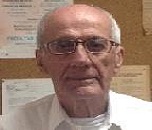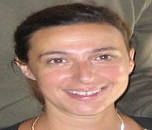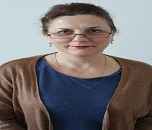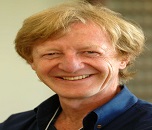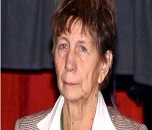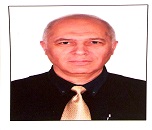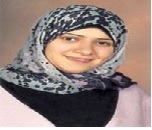Theme: Key implications in Radiation, Nuclear processes and Nuclear properties
Nuclear Chemistry 2016
Track 1: Nuclear chemistry: An Introduction
Nuclear Chemistry is the subfield of chemistry that is concerned with changes in the nucleus of elements. These progressions are the wellspring of radioactivity furthermore, nuclear energy. The nuclear properties of an atom rely upon the quantity of protons and neutrons in the nucleus of the atom. The quantity of these particles in the nucleus can cause the nucleus to be unstable. The nucleus can spontaneously emanate particles and electromagnetic radiation to diminish energy and become more stable. At the point when this happens, the atom is spoken to be radioactive. Radioactivity is characterized as an unconstrained emanation from the atom's nucleus. The emanation of the nucleus generally happens only in elements with an atomic number more prevalent than 80. Once the nucleus transmits the radiation, it has decayed and engendered an alternate element or an isotope of the same element that may not be radioactive.
There are three primary sorts of radiation discharged by radioactive isotopes: alpha, beta and gamma rays. Alpha particles are the atomic nuclei of the helium-4 atom. Beta particles are electrons and are radiated when a neutron transforms to a proton within the nucleus. Gamma rays are electromagnetic radiation of very short wavelength and high vitality, related to x-rays. An ordinary and boring source of alpha particle emission is the Po-210 radioisotope. The radioisotope of Sr-90 transmits beta particles, and Co-60 radiates gamma beams.
Some radioisotopes decay terribly efficiently, while others decay much more slowly. The term which depicts the rate of decay of a specific substance is kenned as the moiety-life. Half-life is the span required for a moiety of a given number of radioactive atoms to decay. For instance, if one begins with 20 radioactive atoms and following 5 minutes 10 atoms remain, then the half-life of that isotope would be 5 minutes. After another 5 minutes only 5 atoms would stay, etc. The half-life of sundry radioactive isotopes can be as short as a microsecond or as long as billions of years. Kenning the moiety-life of a radioactive isotope demonstrates quite subsidiary in deciding the age of an object. This process is kenned as radioactive dating and has empowered researchers to estimate the age of the earth.
Related Conferences: International Conference on Atomic Physics, November 17-18, 2016, Atlanta, USA; International Conference on Quantum Physics and Nuclear Engineering, March 14-16, 2016, London, UK; International Conference on Nuclear Medicine and Radiation Therapy, July 14-15, 2016, Cologne, Germany; International Conference on Radiation Oncology during September 26-27, 2016, at London, UK; European Chemistry Congress, June 16-18, 2016. Rome, Italy; World Nuclear Exhibition 2016, June 28–30, 2016, Paris, France; International Youth Nuclear Congress 2016, July 24–30, 2016, Hangzhou, China; 9-th International Conference on Nuclear and Radiochemistry, August 29 – September 02, 2016, Helsinki, Finland; NH 28th Conference of the Nuclear Societies in Israel, April 12–14, 2016, Tel Aviv, Israel; The Nuclear Materials Conference 2016, November 07–10, 2016, Montpellier, France, 1st International Conference on Radioanalytical and Nuclear Chemistry, 10-16 April, 2016 - Budapest, Hungary; Chemistry Conferences Europe June 16-18, 2016 Rome, Italy
Track 2: Radiochemistry
Radiochemistry is the science of radioactive materials, where radioactive isotopes of components are utilized to study about the properties and chemical responses of non-radioactive isotopes, regularly inside of radiochemistry the nonappearance of radioactivity prompts a substance being portrayed as being inactive as the isotopes are steady. Quite a bit of radiochemistry manages the utilization of radioactivity to study conventional synthetic responses. This is altogether different from radiation chemistry where the radiation levels are kept too low to impact the science.
Related Conferences: International Conference on Atomic Physics, November 17-18, 2016, Atlanta, USA; International Conference on Quantum Physics and Nuclear Engineering, March 14-16, 2016, London, UK; International Conference on Nuclear Medicine and Radiation Therapy, July 14-15, 2016, Cologne, Germany; International Conference on Radiation Oncology during September 26-27, 2016, at London, UK; European Chemistry Congress, June 16-18, 2016. Rome, Italy; NORM VIII 2016 - Naturally OccurringRadioactive Materials Symposium, October 18-21, 2016 - Rio de Janeiro, Brazil; iWoRiD International Workshop on Radiation Imaging Detectors, July 3-7 2016, Barcelona, Spain; International Workshop on Semiconductor Pixel Detectors for Particles and Imaging (PIXEL2016), September 5-9, 2016, Sestri Levante, Italy; Fourth International Conference on Radiation and Applications in Various Fields of Research (RAD 2016), May 23 – 27, 2016, Nis, Serbia; International Conference on the Safety of Radioactive Waste Management, November 21 – 25, 2016, Vienna, Austria; 13th International Conference on Radiation Shielding (ICRS-13) and 19th Topical Meeting of the Radiation Protection & Shielding Division (RPSD-2016), October 3-6, 2016, Paris, France;Chemistry Conferences Europe June 16-18, 2016 Rome, Italy
Track 3: Radiology
Radiology is specialty of pharmaceutical that uses ionizing and nonionizing radiation for the diagnosis and treatment of illness. Radiology utilizes imaging innovations, for example, X-ray radiography, magnetic resonance imaging (MRI), nuclear medicine, ultrasound, computed tomography (CT), and positron emission tomography (PET) to see inside of the human body keeping in mind to diagnose disease and variations from the norm. Imaging implies making a photo of the inward configuration of a thick protest, which in radiology generally implies a part of the human body with the utilization of radiation.
Radiology is sometimes alluded to as radioscopy or clinical radiology. Clinical radiology alludes to the utilization of radiology to diagnose and/or treat damage or ailment. Radiology is a key some portion of clinical practice over an extensive variety of medical disciplines. It is normally the best, insignificantly intrusive method for diagnosing, treating or checking infection and injury. In the course of the most recent 20 years clinical imaging has turned out to be significantly more complex.
Related Conferences: International Conference on Neuroimaging and Interventional Radiology during August 22-23, 2016. Vienna, Austria; International Conference on Medical Imaging & Diagnosis to be held on October 20-21, 2016, Chicago, USA; International Conference on Nuclear Medicine and Radiation Therapy, July 14-15, 2016, Cologne, Germany; International Conference on Atomic Physics, November 17-18, 2016, Atlanta, USA; International Conference on Radiation Oncology during September 26-27, 2016, London, UK; Annual Scientific Meeting of the Australian and New Zealand Society of Nuclear Medicine, April 22 – 25, 2016,Rotorua, New Zealand; 5th Balkan & 13th National Congress of Nuclear Medicine, June 17 – 20, 2016, Thessaloníki, Greece; International Workshop on Semiconductor Pixel Detectors for Particles and Imaging(PIXEL2016), September 5-9, 2016, Sestri Levante, Italy; 37th Annual High Country Nuclear MedicineConference, February 27 – March 2, 2016, Vail, CO; EANM'16 - 29th Annual Congress of the European Association of Nuclear Medicine, October 15 – 19, 2016, Barcelona, Spain; BRITISH NUCLEAR MEDICINESOCIETY SPRING MEETING 2016, APRIL 17 - 19, 2016, BIRMINGHAM, UNITED KINGDOM; Chemistry Conferences Europe June 16-18, 2016 Rome, Italy
Track 4: Nuclear physics
Nuclear physics is a program that spotlights on the scientific investigation of the properties and conduct of atomic nuclei guideline in nuclear reaction hypothesis, quantum mechanics, energy protection, nuclear fusion and fission, solid and frail nuclear forces, nuclear displaying, nuclear decay, nucleon scrambling, pairing, photon and electron responses, statistical methods, and research gear operation and support.
Related Conferences: International Conference on Atomic Physics, November 17-18, 2016, Atlanta, USA; International Conference on Quantum Physics and Nuclear Engineering, March 14-16, 2016, London, UK; International Conference on Nuclear Medicine and Radiation Therapy, July 14-15, 2016, Cologne, Germany; International Conference on Radiation Oncology during September 26-27, 2016, at London, UK; European Chemistry Congress, June 16-18, 2016. Rome, Italy; World Nuclear Exhibition 2016, June 28–30, 2016, Paris, France; International Youth Nuclear Congress 2016, July 24–30, 2016, Hangzhou, China; 9-th International Conference on Nuclear and Radiochemistry, August 29 – September 02, 2016, Helsinki, Finland; NH 28th Conference of the Nuclear Societies in Israel, April 12–14, 2016, Tel Aviv, Israel; The Nuclear MaterialsConference 2016, November 07–10, 2016, Montpellier, France, 1st International Conference on Radioanalytical and Nuclear Chemistry, 10-16 April, 2016 - Budapest, Hungary; Chemistry Conferences Europe June 16-18, 2016 Rome, Italy
Track 5: Radiation Chemistry
Radiation Chemistry is a subdivision of nuclear chemistry that studies compound changes in materials exposed to high-energy radiations. It utilizes radiation as the initiator of chemical reactions, as a wellspring of energy that disturbs the sensitive energy balance in stable frameworks. In that way it is a more youthful sister of photochemistry, which does likewise, however utilizes another kind of electromagnetic energy as the initiator. Radiation Chemistry does not manage radioactive components, to utilize them as a wellspring of radiation, dependably physically isolated from the irradiated framework. Practical applications of Radiation Chemistry today stretch out to numerous fields, including human services, nourishment and agribusiness, manufacturing, and information transfers.
Related Conferences: International Conference on Atomic Physics, November 17-18, 2016, Atlanta, USA; International Conference on Quantum Physics and Nuclear Engineering, March 14-16, 2016, London, UK; International Conference on Nuclear Medicine and Radiation Therapy, July 14-15, 2016, Cologne, Germany; International Conference on Radiation Oncology during September 26-27, 2016, London, UK; European Chemistry Congress, June 16-18, 2016, Rome, Italy; 9-th International Conference on Nuclear and Radiochemistry, August 29 – September 02, 2016, Helsinki, Finland; 12th meeting of the Ionizing Radiation and Polymers symposium, September 25 – 30, 2016, Peninsula of Giens, France; Fourth International Conference on Radiation and Applications in Various Fields of Research, May 23 - 27, 2016, Serbia; International Joint Conferences on Radiation Shielding, 3 - 6 October 2016, Paris, France; 14th International Congress of the International Radiation Protection Association, 09 May - 13 May, Cape Town, South Africa; 11th Trento Workshop on Advanced Silicon Radiation Detectors, February 22-24 2016, Paris, France; Chemistry Conferences Europe June 16-18, 2016 Rome, Italy
Track 6: Radioactivity
Radioactivity, otherwise called radioactive decay or nuclear decay, is the procedure by which a nucleus of an unsteady atom loses energy by emitting radiation. Material that suddenly emanates such radiation, which incorporates alpha particles, beta particles, gamma rays and transformation electrons, is viewed as radioactive.
Radioactive decay is an arbitrary process at the level of single atoms, in that, as indicated by quantum hypothesis, it is difficult to anticipate when a specific atom will decay. The chance that a given atom will decay never shows signs of change, that is, it doesn't make a difference to what extent the atom has existed. For a vast gathering of atoms however, the decay rate for that accumulation can be computed from their measured decay constants or half-lives. This is the premise of radiometric dating. The half-moiety of radioactive atoms have no known limits for shortness or length of term, and range more than 55 orders of magnitude in time.
Related Conferences: International Conference on Atomic Physics, November 17-18, 2016, Atlanta, USA; International Conference on Quantum Physics and Nuclear Engineering, March 14-16, 2016, London, UK; International Conference on Nuclear Medicine and Radiation Therapy, July 14-15, 2016, Cologne, Germany; International Conference on Radiation Oncology during September 26-27, 2016, at London, UK; European Chemistry Congress, June 16-18, 2016. Rome, Italy; NORM VIII 2016 - Naturally Occurring Radioactive Materials Symposium, October 18-21, 2016 - Rio de Janeiro, Brazil; iWoRiD International Workshop on Radiation Imaging Detectors, July 3-7 2016, Barcelona, Spain; International Workshop on Semiconductor Pixel Detectors for Particles and Imaging (PIXEL2016), September 5-9, 2016, Sestri Levante, Italy; Fourth International Conference on Radiation and Applications in Various Fields of Research (RAD 2016), May 23 – 27, 2016, Nis, Serbia; International Conference on the Safety of Radioactive Waste Management, November 21 – 25, 2016, Vienna, Austria; 13th International Conference on Radiation Shielding (ICRS-13) and 19th Topical Meeting of the Radiation Protection & Shielding Division (RPSD-2016), October 3-6, 2016, Paris, France; Chemistry Conferences Europe June 16-18, 2016 Rome, Italy
Track 7: Nuclear Engineering
Nuclear engineering is the branch of engineering concerned with the use of the breakdown (fission) and additionally the fusion of atomic nuclei and/or the use of other sub-atomic physics, based on the principles of nuclear physics. In the sub-field of nuclear fission, it especially incorporates the interaction and maintenance of systems and segments like nuclear reactors, nuclear power plants, and/or atomic weapons. The field additionally includes the study of medicinal and different applications of radiation, nuclear security, heat/thermodynamics transport, nuclear fuel and/or other related innovation (e.g., radioactive waste disposal), and the issues of nuclear expansion.
Nuclear engineers work to outfit the energy discharged from nuclear reactions. Nuclear engineering, manages with the application of nuclear energy in an assortment of settings, including nuclear power plants, submarine propulsion systems, medical diagnostic tools such as MRI machines, food production, nuclear weapons and radioactive-waste management.
Related Conferences: International Conference on Atomic Physics, November 17-18, 2016, Atlanta, USA; International Conference on Quantum Physics and Nuclear Engineering, March 14-16, 2016, London, UK; International Conference on Nuclear Medicine and Radiation Therapy, July 14-15, 2016, Cologne, Germany; International Conference on Radiation Oncology during September 26-27, 2016, at London, UK; European Chemistry Congress, June 16-18, 2016. Rome, Italy; International Conference on Nuclear Engineering, June 26-30, 2016, Charlotte, NC; 18th International Conference on Nuclear Engineering, London, March 17 - 18, 2016, United Kingdom; The Nuclear and space radiation effects conference, July 11 - 15, 2016, Portland, Oregon; International Conference of Nuclear Sciences and Applications, 20–24 February 2016, Al Ghardaqah, Egypt; Nuclear and Emerging Technologies for Space 2016, February 22-25, 2016, Huntsville, Alabama; 18th International Conference on Nuclear Physics and Nuclear Engineering, March 30 - 31, 2016, Prague, Czech Republic; Chemistry Conferences Europe June 16-18, 2016 Rome, Italy
Track 8: Nuclear Chain Reactions
A nuclear chain reaction happens when one single nuclear reaction causes a normal of one or more resulting nuclear reactions, in this way prompting the likelihood of a self-proliferating arrangement of these reactions. The particular nuclear reaction might be the splitting method of overwhelming radioisotopes (e.g. 235U). The nuclear chain reaction discharges a few million times more nuclear energy for each reaction than any chemical reaction.
Nuclear Chain Reactions are a simple, yet intense system which to deliver both useful and dangerous strengths. Just comprehended to a huge degree within the most recent century, nuclear chain reactions have numerous practical uses as a part of the current time. Chain reactions can be tended to into two classes: initially, controlled (like a nuclear power plant) and uncontrolled (a nuclear bomb).
Related Conferences: International Conference on Atomic Physics, November 17-18, 2016, Atlanta, USA; International Conference on Quantum Physics and Nuclear Engineering, March 14-16, 2016, London, UK; International Conference on Nuclear Medicine and Radiation Therapy, July 14-15, 2016, Cologne, Germany; International Conference on Radiation Oncology during September 26-27, 2016, at London, UK; European Chemistry Congress, June 16-18, 2016. Rome, Italy; 47th Annual Meeting on Nuclear Technology (AMNT 2016), May 10 – 12, 2016, Hamburg, Germany; International Nuclear Power Plants Summit, March 8-9, 2016, Istanbul, Turkey; Nuclear Industry Summit, March 29-31, 2016, Washington, USA; Fusion Energy Conference, 17–22 October 2016, Kyoto, Japan; 11th Annual European Nuclear Power May 18 - 19, 2016, London, UK; 7th Annual Nuclear Construction Summit Atlanta, April 15, 2016, GA, USA; Chemistry Conferences Europe June 16-18, 2016 Rome, Italy
Track 9: Nuclear Fusion and Fission
Nuclear fusion and nuclear fission are diverse sorts of reactions that discharge nuclear energy because of the vicinity of more powerful atomic bonds between particles found within a nucleus. In fission, an atom is part into two or more smaller, lighter atoms. Fusion, conversely, happens when two or smaller atoms intertwine, making a bigger, heavier atom.
Fusion is the reaction in which two or more atomic nuclei consolidate, shaping another component with a higher nuclear number. The energy discharged in fusion is identified with E = mc 2 (Einstein’s famous energy-mass equation). On Earth, the in all probability fusion reaction is Deuterium–Tritium reaction. Deuterium and Tritium are radioisotopes of hydrogen.
Nuclear fission is the part of a gigantic nucleus into photons as gamma rays, free neutrons, and other subatomic particles.
Fusion and fission nuclear reactions are chain reactions, implying that one nuclear occasion causes no less than one other nuclear reaction, and ordinarily more. The outcome is an expanding cycle of reactions that can rapidly get to be uncontrolled.
Related Conferences: International Conference on Atomic Physics, November 17-18, 2016, Atlanta, USA; International Conference on Quantum Physics and Nuclear Engineering, March 14-16, 2016, London, UK; International Conference on Nuclear Medicine and Radiation Therapy, July 14-15, 2016, Cologne, Germany; International Conference on Radiation Oncology during September 26-27, 2016, at London, UK; European Chemistry Congress, June 16-18, 2016. Rome, Italy; The Nuclear Materials Conference, 7th - 10th November 2016, Montpellier, France; ITER International Fusion Energy Days (MIIFED) and the ITER Business Forum, February 08 – 11, 2016, Munich, Monaco; Fusion Energy Conference, 17–22 October 2016, Kyoto, Japan; Nuclear Power Plants Summit, March 08 – 09, 2016, Istanbul, Turkey; 1st International Conference on Radioanalytical and Nuclear Chemistry, 10-16 April, 2016 - Budapest, Hungary; Chemistry Conferences Europe June 16-18, 2016 Rome, Italy
Track 10: Nuclear Fuel cycle
The nuclear fuel cycle, additionally called nuclear fuel chain, is the movement of nuclear fuel through a progression of varying stages. It comprises of steps in the front end, which are the readiness of the fuel, steps in the administration period in which the fuel is utilized amid reactor operation, and steps in the back end, which are important to securely oversee, contain, and either reprocess or discard spent nuclear fuel. In the event that spent fuel is not reprocessed, the fuel cycle is alluded to as an open fuel cycle (or a once-through fuel cycle); if the spent fuel is reprocessed, it is alluded to as a shut fuel cycle.
Fuel cycles can tackle a wide assortment of reactor design, and diverse arrangements might bode well than others in specific ranges in view of characteristic asset accessibility, vitality development projections, and governmental issues. All business power-creating reactors in the USA are working on a once-through cycle (which is all the more a line than a cycle), while some in Europe and Asia experience a few times reused cycle (which sounds interesting). The financial plan, governmental issues, and long-term sustainability of nuclear energy depend fundamentally on fuel cycles.
Related Conferences: International Conference on Atomic Physics, November 17-18, 2016, Atlanta, USA; International Conference on Quantum Physics and Nuclear Engineering, March 14-16, 2016, London, UK; International Conference on Nuclear Medicine and Radiation Therapy, July 14-15, 2016, Cologne, Germany; International Conference on Radiation Oncology during September 26-27, 2016, at London, UK; European Chemistry Congress, June 16-18, 2016. Rome, Italy; WORLD NUCLEAR FUEL CYCLE 2016, April 4 – 6 2016, Abu Dhabi, UAE; International Conference on Fast Reactors and Related Fuel Cycles (FR17), June 26 – 30, 2017, Yekaterinburg, Russia; Used Fuel Management Conference, May 3-5, 2016, Orlando, FL; Top Fuel 2016, 11 Sep - 16 Sep, ID, USA; World Nuclear Fuel Cycle and Working Group meetings, April 4-6, 2016, Abu Dhabi, UAE; Nuclear Fuels and Structural Materials, 12 June 2016 - 16, 2016, New Orleans, LA, United States; Chemistry Conferences Europe June 16-18, 2016 Rome, Italy
Track 11: Nuclear power
Nuclear power is the utilization of nuclear reactions that discharges nuclear energy to generate heat, which most often as possible is then used in steam turbines to produce power in a nuclear power station. The term incorporates nuclear fission, nuclear decay and nuclear fusion. Currently, the nuclear fission of components in the actinide series of the periodic table deliver the vast majority of nuclear energy in the direct service of mankind, with nuclear decay processes, mainly in the form of geothermal energy, and radioisotope thermoelectric generators, in speciality utilizes making up the rest.
Nuclear (fission) power stations, barring the contribution from maritime nuclear fission reactors, provided 11% of the world's power in 2012, somewhat less than that generated by hydro-electric energy stations at 16%. Since electricity represents around 25% of humankind’s energy usage with the majority of the rest originating from fossil fuel dependant sectors such as transport, manufacturing and home warming, nuclear fission's contribution to the worldwide final energy consumption is around 2.5%, somewhat more than the combined global power production from "new renewables"; wind energy, solar energy, biofuel and geothermal power, which altogether provided 2% of global final energy utilization in 2014.
Related Conferences: International Conference on Atomic Physics, November 17-18, 2016, Atlanta, USA; International Conference on Quantum Physics and Nuclear Engineering, March 14-16, 2016, London, UK; International Conference on Nuclear Medicine and Radiation Therapy, July 14-15, 2016, Cologne, Germany; International Conference on Radiation Oncology during September 26-27, 2016, at London, UK; European Chemistry Congress, June 16-18, 2016. Rome, Italy; NUCLEAR POWER International conference, December 13 – 15 2016, Florida, USA; Power Plant Simulation Conference, February 1 – 3, 2016, San Antonio, United States; 2016 International Congress on Advances in Nuclear Power Plants (ICAPP 2016), April 17-20, 2016, San Francisco, CA; International Nuclear Power Plants Summit, March 8-9, 2016, Istanbul, Turkey; 7th Annual European Power Summit April 25 – 26, 2016, Amsterdam, Netherlands; 11th Annual European Nuclear Power May 18 – 19, 2016, London, UK; Chemistry Conferences Europe June 16-18, 2016 Rome, Italy
Track 12: Radiobiology
Radiobiology is the study of the actions of ionizing radiations on living matter. Since radiation has the ability to cause changes in cells which may later cause them to become malignant, or bring about other detrimental functional changes in irradiated tissues and organs, consideration of the associated radiobiology is important in all diagnostic applications of radiation. Additionally, since radiation can lead directly to cell death, consideration of the radiobiological aspects of cell killing is essential in all types of radiation therapy.
Ionizing radiation is generally harmful and possibly deadly to living things yet can have medical advantages in radiation therapy for the treatment of cancer and thyrotoxicosis. Its most regular impact is the induction of cancer with a latent period of years or decades after exposure. High doses can cause visually sensational radiation burns, and/or rapid fatality through acute radiation syndrome. Controlled doses are used for medical imaging and radiotherapy. Few scientists suspect that low doses may have a mild hormetic effect that can improve health.
Related Conferences: International Conference on Neuroimaging and Interventional Radiology during August 22-23, 2016, Vienna, Austria; International Conference on Medical Imaging & Diagnosis to be held on October 20-21, 2016, Chicago, USA; International Conference on Atomic Physics, November 17-18, 2016, Atlanta, USA; International Conference on Radiation Oncology during September 26-27, 2016, at London, UK; International Conference on Nuclear Medicine and Radiation Therapy, July 14-15, 2016, Cologne, Germany; 18th International Conference on Medical Physics, Radiation Protection and Radiobiology, May 23 - 24, 2016, London, United Kingdom; 15th International Wolfsberg Meeting on Molecular Radiation Biology/Oncology, June 17-19, 2017, Lake Constance, Switzerland; Nuclear Plant Chemistry Conference 2016, October 02 – 07, 2016, Brighton, UK; 18th International Conference on Radiopharmacy and Radiopharmaceuticals, March 03-04, 2016, Singapore; 18th International Conference on Medical Physics, Radiation Protection and Radiobiology, March 17-18, 2016, London, UK; International Conference on Translational Research in Radio-Oncology and Physics for Health, February 15-19, 2016, Geneva, Switzerland; 14th International Workshop on Radiation Damage to DNA, March 20-24, 2016, Melbourne, Australia; Chemistry Conferences Europe June 16-18, 2016 Rome, Italy
Track 13: Nuclear medicine
Nuclear medicine is a medical specialty including the application of radioactive substances in finding and treatment of variety of diseases, including numerous types of cancer biomarkers, coronary illness, gastrointestinal cancer, endocrine disorders, neurological scatters and different anomalies within the body. Nuclear medicine scans are typically directed by atomic pharmaceutical technologists or radiographers. Nuclear medicine, as it were, is "radiology done inside out" or "endoradiology" in light of the fact that it records radiation discharging from inside of the body rather than the radiation that is generated by external sources like X-rays. Additionally, nuclear medicine examines contrast from general radiology as the accentuation is not on imaging life systems but rather the capacity and for such reason, it is known as a physiological imaging modality. Single Photon Emission Computed Tomography or SPECT and Positron Emission Tomography or PET outputs are the two most normal imaging modalities in nuclear medicine.
Related Conferences: International Conference on Neuroimaging and Interventional Radiology during August 22-23, 2016. Vienna, Austria; International Conference on Medical Imaging & Diagnosis to be held on October 20-21, 2016, Chicago, USA; International Conference on Nuclear Medicine and Radiation Therapy, July 14-15, 2016, Cologne, Germany; International Conference on Atomic Physics, November 17-18, 2016, Atlanta, USA; International Conference on Radiation Oncology during September 26-27, 2016, London, UK; Annual Scientific Meeting of the Australian and New Zealand Society of Nuclear Medicine, April 22 – 25, 2016, Rotorua, New Zealand; 5th Balkan & 13th National Congress of Nuclear Medicine, June 17 – 20, 2016, Thessaloníki, Greece; International Workshop on Semiconductor Pixel Detectors for Particles and Imaging (PIXEL2016), September 5-9, 2016, Sestri Levante, Italy; 37th Annual High Country Nuclear Medicine Conference, February 27 – March 2, 2016, Vail, CO; EANM'16 - 29th Annual Congress of the European Association of Nuclear Medicine, October 15 – 19, 2016, Barcelona, Spain; BRITISH NUCLEAR MEDICINE SOCIETY SPRING MEETING 2016, APRIL 17 - 19, 2016, BIRMINGHAM, UNITED KINGDOM; Chemistry Conferences Europe June 16-18, 2016 Rome, Italy
Track 14: Radiopharmacology
Radiopharmacology or medicinal radiochemistry is radiochemistry applied to medication and subsequently the pharmacology of radiopharmaceuticals. Radiopharmaceuticals are utilized as a part of the field of nuclear prescription as radioactive tracers in medical imaging and in treatment for some diseases (for instance, brachytherapy). Numerous radiopharmaceuticals use technetium-99m (Tc-99m) which has numerous valuable properties as a gamma rays-emitting tracer nuclide. In the book Technetium an aggregate of 31 distinct radiopharmaceuticals in light of Tc-99m are recorded for imaging and useful investigations of the mind, myocardium, thyroid gland, lungs, liver, gallbladder, kidneys, skeleton, blood and tumours.
The term radioisotope, which in its general sense alludes to any radioactive isotope (radionuclide), has verifiably been utilized to allude to all radiopharmaceuticals, and this utilization stays basic. In fact, however, numerous radiopharmaceuticals consolidate a radioactive tracer atom into a bigger pharmaceutically-active molecule, which is localized in the body, after which the radionuclide tracer atom permits it to be effortlessly recognized with a gamma camera or comparable gamma imaging device. N example is fludeoxyglucose in which fluorine-18 is fused into deoxyglucose. A few radioisotopes (for instance gallium-67, gallium-68, and radioiodine) are utilized straightforwardly as dissolvable ionic salts, without further alteration. This utilization depends on the chemical and biological properties of the radioisotope itself, to restrict it within the body.
Related Conferences: International Conference on Neuroimaging and Interventional Radiology during August 22-23, 2016. Vienna, Austria; International Conference on Medical Imaging & Diagnosis to be held on October 20-21, 2016, Chicago, USA; International Conference on Nuclear Medicine and Radiation Therapy, July 14-15, 2016, Cologne, Germany; International Conference on Atomic Physics, November 17-18, 2016, Atlanta, USA; International Conference on Radiation Oncology during September 26-27, 2016, London, UK; 18th International Conference on Radiopharmacy and Radiopharmaceuticals, March 03-04, 2016, Singapore; 18th International Conference on Medical Physics, Radiation Protection and Radiobiology, January 12 - 13, 2016, Zurich, Switzerland; Fourth International Conference on Radiation and Applications in Various Fields of Research, May 23 to May 27, 2016, Serbia; International Radiopharmacy and Radiopharmaceuticals Conference, March 26-27, 2016, Madrid Spain; 18th European Symposium on Radiopharmacy and Radiopharmaceuticals, April 07 - 10, 2016, Salzburg, Austria; Fourth International Conference on Radiation and Applications in various research fields. 23-27 May, Nis, Serbia; Chemistry Conferences Europe June 16-18, 2016 Rome, Italy
Track 15: Radiation Monitoring
Radiation monitoring includes the estimation of radiation dosage or radioisotope contamination for reasons related to the control of exposure to radiation or radioactive substances, and the understanding of the outcomes. Environmental monitoring is the estimation of external dosage rates because of sources in the earth or of radionuclide concentrations in ecological media. Source observing is the estimation of activity in radioactive waste being discharged to the environment or of external dose rates due to sources within a facility or activity.
Related Conferences: International Conference on Atomic Physics, November 17-18, 2016, Atlanta, USA; International Conference on Quantum Physics and Nuclear Engineering, March 14-16, 2016, London, UK; International Conference on Nuclear Medicine and Radiation Therapy, July 14-15, 2016, Cologne, Germany; International Conference on Radiation Oncology during September 26-27, 2016, at London, UK; European Chemistry Congress, June 16-18, 2016. Rome, Italy; 18th Use of Computers in Radiation Therapy, June 27-30, 2016, London, UK; Radiation and Health, May 12 - 13, 2016, Amsterdam, Netherlands; The Nuclear and space radiation effects conference, July 11 - 15, 2016, Portland, Oregon; Nuclear Medicine and Radiation Therapy Conference, July 14-15, 2016 Cologne, Germany; Radiation and Oncology Conference, September 26-28, 2016, Valencia, Spain; 14th Congress of the International Radiation Protection Association, May 09 – 13, 2016, Cape Town, South Africa; Canadian Radiation Protection Association's Annual Conference, "The Sky's the limit", May 17 - 20 2016, Toronto, Canada; International Conference on Advancing the Global Implementation of Decommissioning and Environmental Remediation Programmes, May 23 – 27, 2016, Madrid, Spain; Chemistry Conferences Europe June 16-18, 2016 Rome, Italy
Track 16: Nuclear Safety
Nuclear Safety is characterized by the International Atomic Energy Agency (IAEA) as "The achievement of proper working conditions, aversion of nuclear accidents or mitigation of accident consequences, resulting in protection of workers, the public and the environment from undue radiation hazards". The IAEA characterizes Nuclear Security as "The prevention and discovery of and response to, theft, sabotage, unapproved access, illegal transfer or other malicious acts including nuclear material, other radioactive substances or their associated facilities".
Nuclear power plant design use fissile materials to deliver energy in the form of heat, which is changed to power by conventional generating plant. Radioactive materials are created as a by-product of this procedure. Whilst radioactive materials can have valuable uses, for example, in cancer therapy, they are generally harmful to health. Their utilization, and the process by which they are produced, must be strictly managed to guarantee nuclear safety.
Related Conferences: International Conference on Atomic Physics, November 17-18, 2016, Atlanta, USA; International Conference on Quantum Physics and Nuclear Engineering, March 14-16, 2016, London, UK; International Conference on Nuclear Medicine and Radiation Therapy, July 14-15, 2016, Cologne, Germany; International Conference on Radiation Oncology during September 26-27, 2016, at London, UK; European Chemistry Congress, June 16-18, 2016. Rome, Italy; International Conference on Human and Organizational Aspects of Assuring Nuclear Safety – Exploring 30 Years of Safety Culture, February 22–26, 2016, Vienna, Austria; International Conference on Effective Nuclear Regulatory Systems: Sustaining Improvements Globally, April 11 – 15, 2016, Vienna, Austria; 14th International Congress of the International Radiation Protection Association, 09 May - 13 May 2016, Cape Town, South Africa; International Conference on Advancing the Global Implementation of Decommissioning and Environmental Remediation Programmes, May 23–27, 2016, Madrid, Spain; Third International Conference on Nuclear Knowledge Management – Challenges and Approaches, November 7–11, 2016, Vienna, Austria; International Conference on the Safety of Radioactive Waste Management, November 21 – 25, 2016, Vienna, Austria; Chemistry Conferences Europe June 16-18, 2016 Rome, Italy
Mark your calendars for International Conference on Nuclear Chemistry at San Antonio, Texas, USA from December 08-09, 2016. This scientific gathering guarantees that offering the thoughts and ideas will enable and secure you the theme “Key Implications in Radiation, Nuclear processes and Nuclear properties” It provides a global platform to discuss and learn about nuclear science, nuclear engineering, radiation chemistry, nuclear fuel cycles, nuclear chain reactions, applied nuclear chemistry, nuclear medicine, radioactivity, radio pharmacology, nuclear power plants, radiation monitoring, radiopharmaceuticals and other applications, safety and security involved in Nuclear Chemistry.
The conference will mark with the attendance of Editorial Board Members of ConferenceSeries Ltd Journals, Scientists, young researchers, business delegates and student communities representing more than 25 countries. We provide a platform where you can exchange your knowledge and experiences with the developing trends in the related fields of Nuclear Chemistry.
Target Audience:
Nuclear chemists, Nuclear Engineers, Radio pharmacists, Laboratory Chemists, Doctors, Scientists, Radiological Instrument Vendors, Researchers, Professors and Students from Academia. Delegates from various Nuclear Research centres and Power Plants from all over the world.
Nuclear Chemistry is the subfield of chemistry that is concerned with changes in the nucleus of elements. These progressions are the wellspring of radioactivity furthermore, nuclear power. Radioactivity was discovered in the late 1800s, and since then it has been the subject of numerous movies, cartoons, and TV shows.
Nuclear chemists work with various isotopic types of elements to study fission and fusion procedures, or they delve into the effects of ionizing radiation on materials, living organisms, and the environment. Nuclear chemists may work in laboratories, or they may do theoretical work and often, do some of both.
Conference Highlights:
Introduction to Nuclear chemistry
Radiation Chemistry
Radioactivity
Nuclear Engineering
Nuclear Chain Reactions
Nuclear Fusion and Fission
Nuclear Fuel cycle
Nuclear power
Radiobiology
Nuclear Medicine
Radio pharmacology
Radiation Monitoring
Nuclear Safety
Why to attend???
With members from around the world focused on learning about radioactivity, nuclear chain reactions, safety, security and various applications involved in nuclear chemistry; this is your single best opportunity to reach the largest assemblage of participants. Conduct demonstrations, distribute information, meet with current and potential customers, make a splash with a new product line, and receive name recognition at this 2-day event. World-renowned speakers, the most recent techniques, tactics, and the newest updates in fields are hallmarks of this conference.
Market Analysis:
The rise in demand for clean power and decreasing fossil fuel stores are empowering governments and leading energy companies to invest in the nuclear energy market. The worldwide nuclear energy market is expected to grow at a considerable rate on account of increasing demand for energy that could satisfy the need generated by additional infrastructure without carbon emissions or adversely impacting the environment in other significant ways.
As per the World Nuclear Association, there are about 435 operational nuclear power reactors across 31 countries in the world. An extra 71 reactors are under construction in 15 countries, which is the largest rate of nuclear reactor development found in 25 years, as reported by the U.S.-based Nuclear Energy Institute.
The numbers obviously show the enhanced propensity among worldwide economies to adopt nuclear technology as a practical alternative to fossil fuels for power generation. Questionable perspectives regarding the safe deployment of nuclear technology and the notoriety picked up by accidents in nuclear reactors such as Fukushima, Three Mile Island, and Chernobyl hasn’t deterred arrangements of developing economies for nuclear portfolio expansion. Despite decisions against the expansion of nuclear power by a modest bunch of leading economies, construction of new nuclear plants in China and Russia is relied upon to keep the demand for nuclear energy high during 2014 and 2020.
Major Societies of Nuclear Chemistry
ACS Division of Nuclear Chemistry and Technology
The American Nuclear Society
Australian Nuclear Science and Technology Organisation
British Institute of Radiology
Canadian Nuclear Association
Canadian Nuclear Society
Radiation Research Society
Radiological Society of North America
Radiation Research Society
The Society of Nuclear Medicine
To share your views and research, please click here to register for the Conference.
To Collaborate Scientific Professionals around the World
| Conference Date | December 8-9 , 2016 | ||
| Sponsors & Exhibitors |
|
||
| Speaker Opportunity Closed | Day 1 | Day 2 | |
| Poster Opportunity Closed | Click Here to View | ||
Useful Links
Special Issues
All accepted abstracts will be published in respective Our International Journals.
Abstracts will be provided with Digital Object Identifier by






